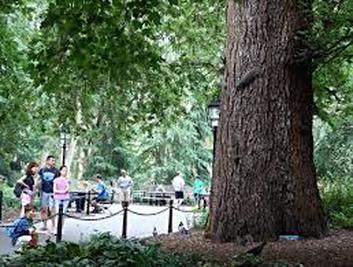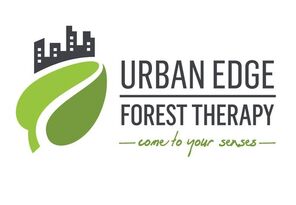 Hangman's Elm, photo by Nancy Kopans Hangman's Elm, photo by Nancy Kopans With the United States commemorating its 242nd birthday comes an opportunity to consider creatures that were alive on July 4, 1776 and are still alive today: trees. New York City is fortunate to have several trees that were alive during this time. Manhattan’s oldest tree, estimated to be at least 315 years old, is an English Elm located in the northwest corner of Washington Square Park. Though named the “Hangman’s Elm” it has not witnessed any hangings. In 1827 Alfred Pell sold 2.5 acres of land that included the tree to help create the park. As English elms are not native to the U.S., the tree is thought to have come from seeds brought to the continent on a Dutch West India Company ship, and thus is an early immigrant that now stands sturdy and tall. The Hangman's Elm is not the only tree in Manhattan that was alive in 1776. George Washington is rumored to have watched the 1776 battle of Washington Heights from the shelter of an elm at 163rd Street and St. Nicholas Avenue, a tree named “the Dinosaur” that is over 300 years old. In an isolated part of Alley Pond Park in Bayside Queens, near the intersection of the Cross Island Parkway and the Long Island Expressway at 58th Road and East Hampton Boulevard sits “the Queens Giant,” a 134-foot tall tulip tree estimated to be 350 to 450 years old. And, a 145-foot talk tulip tree in Staten Island’s Clove Lakes Park is at least 300 years old. The Bronx and Brooklyn do not appear to have trees that were alive in 1776. However, they do have some very old trees. The oldest tree in the Bronx is thought to be an over-200 year old white oak located near the 18th hold of Pelham Bay park’s Split Rock Golf Course. The oldest tree in Brooklyn is likely to be among one of the 30,000 trees in Prospect Park’s vestige of the last remaining natural forest in Brooklyn. In 2009, a 220-year old black oak in Prospect Park was uprooted in a storm. With longevity that stretches the imagination, for the entirety of their lives these ancient living creatures have stood in the same place. Hangman's Elm, The Dinosaur, the Queens Giant, and Staten Island's tulip tree were alive during the times of the Dutch and British occupation, before the United States was a sovereign country. In 1776 the population of New York City (at least of those of European origin) was about 20,000 and plummeted to nearly half of this following the American Revolution, with the departure of the Tories. Inhabitants clustered at the tip of Manhattan. Canal Street was sparsely populated, and Greenwich Village and beyond were rural. The population would grow to 38,000 by 1790 and would multiply over time. And throughout this time stood the very same trees described above, witnesses to generations of immigrants--including my ancestors from Eastern Europe--crossing vast oceans, witnesses to streets paving over the land and to bridges and buildings rising; year after year and ring after ring, they have witnessed New York City transforming from a small overseas outpost into a world city. One wonders what stories the trees would tell if they could speak.
0 Comments
Leave a Reply. |
About this Blog
Hi! I'm Nancy Kopans, founder of Urban Edge Forest Therapy. Join me on an adventure to discover creative ways to connect with nature in your daily life, ways that are inspired by urban surroundings that can reveal unexpected beauty, with the potential to ignite a sense of wonder. Archives
April 2023
Categories
All
|

 RSS Feed
RSS Feed